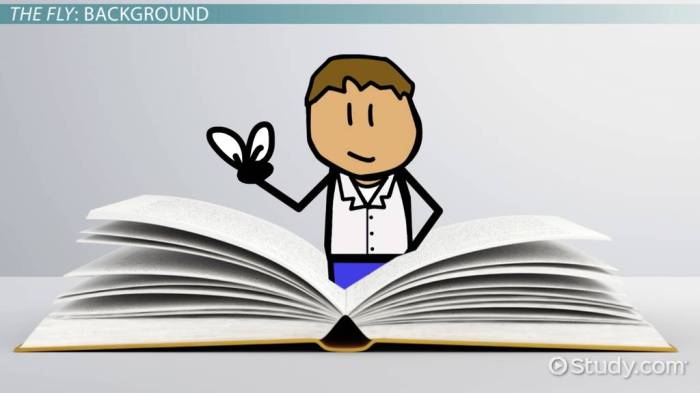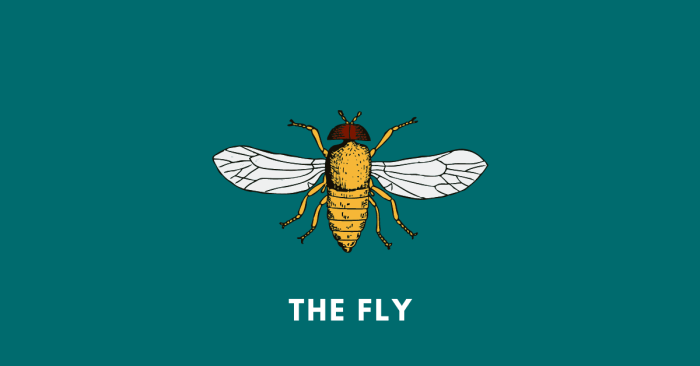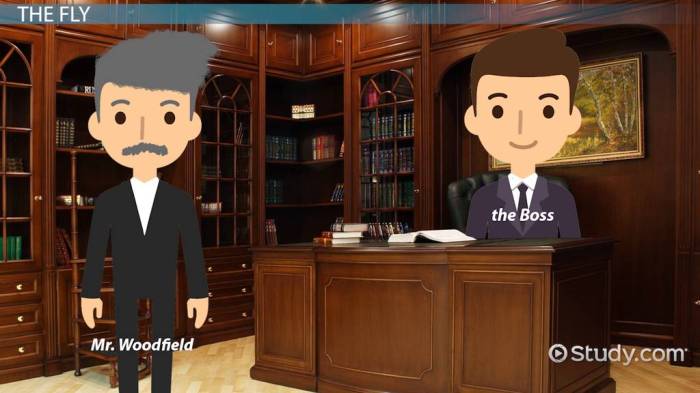The Fly by Katherine Mansfield Questions and Answers PDF: A Comprehensive Study Guide offers an in-depth analysis of Mansfield’s renowned short story, providing a comprehensive resource for students, scholars, and literary enthusiasts alike.
This guide delves into the intricacies of the story, exploring its themes, characters, symbolism, and literary techniques, empowering readers with a profound understanding of Mansfield’s masterpiece.
The Fly by Katherine Mansfield: Overview

Katherine Mansfield’s “The Fly” is a short story that revolves around the tragic demise of a young girl and her family’s struggle to cope with grief. Through the use of vivid imagery and symbolism, Mansfield explores themes of death, loss, and the fragility of human life.
The story opens with the young girl, who is unnamed, lying in bed with a fever. As her family gathers around her, they are confronted with the realization that she is dying. The fly, which has been buzzing around the room, becomes a symbol of the girl’s impending death and the family’s inability to prevent it.
As the story progresses, the fly becomes increasingly prominent, representing the decay and corruption that accompanies death. The family’s attempts to swat the fly away are futile, symbolizing their powerlessness in the face of the inevitable.
Character Analysis
The Young Girl
The young girl is the central figure in the story, and her death is the catalyst for the family’s grief. She is described as being innocent and vulnerable, and her death is a tragic reminder of the fragility of life.
The Family
The family is deeply affected by the girl’s death. They are unable to come to terms with their loss and are consumed by grief. The fly becomes a symbol of their inability to accept the girl’s death and move on with their lives.
The Fly
The fly is a complex and multifaceted symbol in the story. It represents the decay and corruption that accompanies death, as well as the family’s inability to prevent the girl’s death. The fly is also a reminder of the fragility of life and the inevitability of death.
Symbolism and Imagery
Mansfield uses a variety of symbols and images in “The Fly” to create a vivid and evocative atmosphere. The fly is the most prominent symbol in the story, but other symbols include the girl’s room, the flowers, and the window.
The Fly
As mentioned above, the fly is a complex and multifaceted symbol in the story. It represents the decay and corruption that accompanies death, as well as the family’s inability to prevent the girl’s death. The fly is also a reminder of the fragility of life and the inevitability of death.
The Girl’s Room
The girl’s room is a symbol of her innocence and vulnerability. It is described as being a “pretty room” with “white curtains” and “a white bed.” The room is a sanctuary for the girl, but it is also a reminder of her impending death.
The Flowers
The flowers in the story are a symbol of beauty and hope. They are a reminder of the girl’s life and the beauty that she brought to the world. However, the flowers are also a reminder of the girl’s death, as they will eventually wilt and die.
The Window
The window in the story is a symbol of the outside world. It is a reminder of the life that goes on outside the girl’s room, but it is also a reminder of the girl’s isolation. The window is a barrier between the girl and the outside world, and it symbolizes her impending death.
Literary Techniques
Mansfield uses a variety of literary techniques in “The Fly” to create a vivid and evocative atmosphere. These techniques include foreshadowing, irony, and stream-of-consciousness.
Foreshadowing
Mansfield uses foreshadowing to create a sense of foreboding and to hint at the girl’s impending death. For example, the story opens with the girl lying in bed with a fever, and the fly is buzzing around the room. These images are foreshadowing the girl’s death and the family’s grief.
Irony
Mansfield uses irony to create a sense of tension and to highlight the family’s inability to accept the girl’s death. For example, the family tries to swat the fly away, but their efforts are futile. This irony highlights the family’s powerlessness in the face of the inevitable.
Stream-of-consciousness
Mansfield uses stream-of-consciousness to convey the thoughts and emotions of the characters. This technique allows the reader to enter the minds of the characters and to experience their grief firsthand.
Historical and Cultural Context
“The Fly” was written in 1911, during a time of great social and cultural change. The Victorian era was coming to an end, and new ideas about art and literature were emerging. Mansfield was a part of the modernist movement, which rejected the traditional values and forms of the Victorian era.
The story reflects the modernist preoccupation with death and loss. Mansfield was influenced by the work of Sigmund Freud, who believed that death was a powerful force that could shape human behavior. Mansfield’s story explores the psychological effects of death on the family and how grief can lead to madness.
Themes and Interpretations, The fly by katherine mansfield questions and answers pdf
“The Fly” is a complex and multifaceted story that can be interpreted in many different ways. Some of the central themes of the story include:
- Death and loss
- The fragility of life
- The power of grief
- The search for meaning in life
The story can also be interpreted as a metaphor for the loss of innocence and the transition from childhood to adulthood. The fly can be seen as a symbol of the darkness and corruption that exists in the world, and the girl’s death can be seen as a symbol of the loss of innocence.
Ultimately, the meaning of “The Fly” is up to the individual reader to decide. The story is a powerful and moving exploration of death, loss, and the human condition.
Essential FAQs: The Fly By Katherine Mansfield Questions And Answers Pdf
What is the significance of the fly in the story?
The fly symbolizes the protagonist’s inner turmoil, representing the guilt, shame, and repressed emotions that torment her.
How does Mansfield use foreshadowing in the story?
Mansfield employs foreshadowing through subtle hints and imagery, such as the buzzing of the fly and the protagonist’s growing sense of unease, to build tension and create a sense of impending doom.
What is the main theme explored in the story?
The story explores the theme of guilt and its corrosive effects on the human psyche, examining the protagonist’s struggle to come to terms with her past actions and the consequences they have on her present life.


